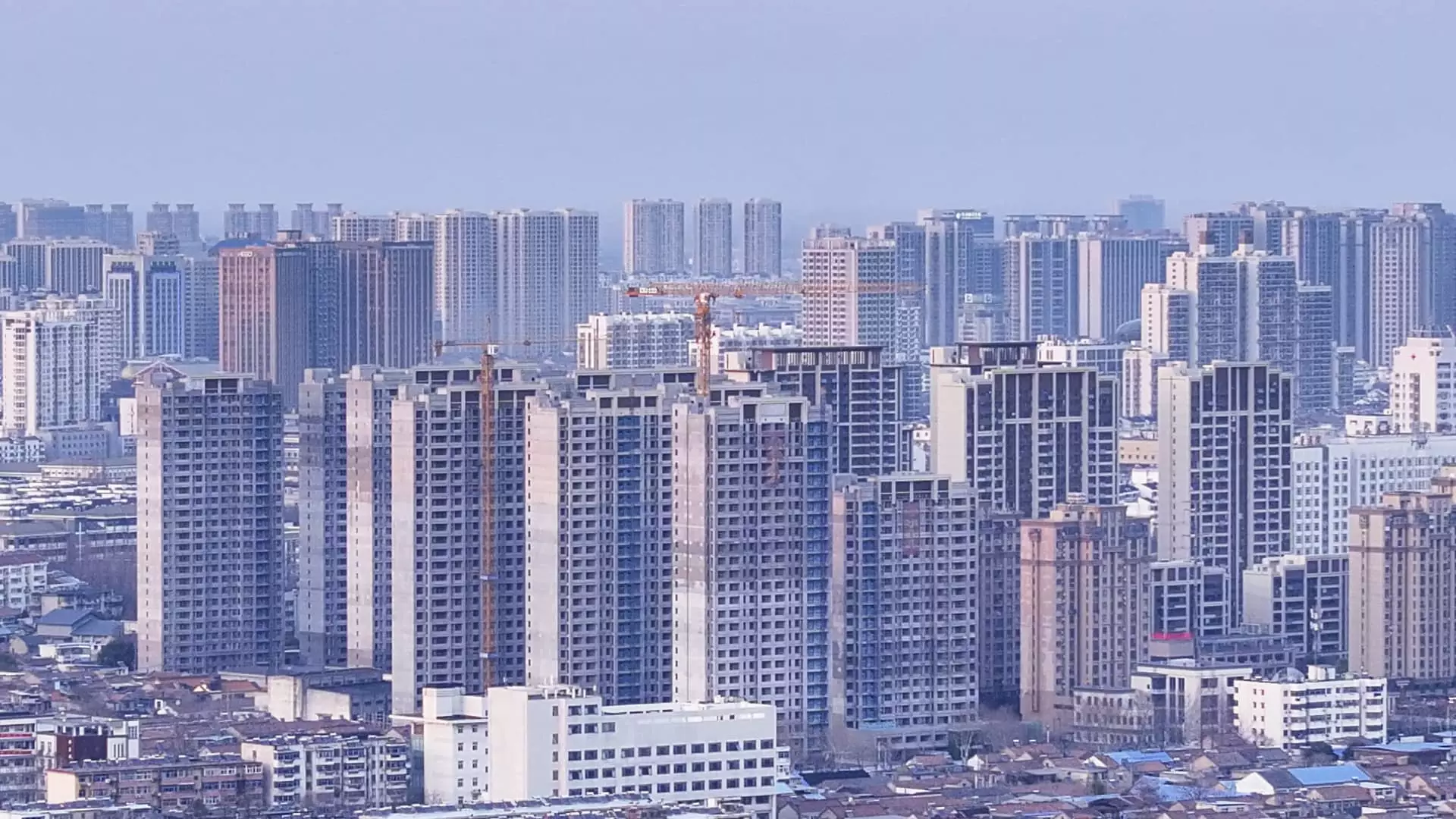In recent discussions, optimism surrounding China’s real estate market has surged. Analysts from UBS, among others, have begun to declare that the once beleaguered sector is nearing stabilization, following years of turmoil. However, such optimistic forecasts raise critical questions about the durability and genuineness of this so-called recovery. John Lam of UBS announced that positive signs are emerging after a prolonged downturn, yet he also noted that these developments may not reflect nation-wide trends. This duality of expectation borders on dangerously naive; are we simply witnessing a temporary blip in a fundamentally flawed system?
A 30% increase in secondary home sales in major cities is indeed promising, but it should be taken with a grain of skepticism. It emphasizes a striking urban-rural divide; the plight of those living in less urbanized areas remains grim. If we narrow our focus only to these metropolitan figures, we risk overlooking the broader spectrum of socio-economic disparity that continues to plague the nation.
The Underlying Economic Fragility
The trajectory of China’s real estate market serves as a stark reminder of systemic vulnerabilities that have been exacerbated by previous policies. Since 2020, when the Beijing administration clamped down on developers’ rampant borrowing practices, we’ve observed a cascading effect on the economy. Major players like Evergrande have filed for bankruptcy, sending ripples through a market that previously accounted for a staggering quarter of China’s GDP.
Despite government interventions, including aggressive stimulus measures, the reality remains harsh. An almost 10% decline in real estate investments during the early months of 2023 cannot be ignored. It suggests that mere policy adjustments cannot remedy ingrained issues in the property sector. The ongoing disparity between government projections and actual market performance paints a concerning picture that raises alarm bells about the political will to facilitate real change.
Rising House Prices vs. Plummeting Consumer Confidence
As analysts herald the stabilization of home prices, we must interrogate whose interests these predictions serve. The forecast for home prices stabilizing by 2026 is optimistic at best; it seems to neglect the too-often overlooked factor of consumer confidence. Without a genuine recovery in everyday citizens’ faith in the market, even the most favorable projections are bound to fall short.
The contributions of foreign investors into the market, along with the rising interest in affordable rental housing, suggest a lucrative prospect for the elite but raise the ethical question: who stands to gain, and who remains marginalized? Involvement from international firms like Invesco and the establishment of joint ventures signal an influx of capital. Still, what does this mean for the average Chinese citizen who aspires to own property one day?
The Dark Reality of Inventive Solutions
The complexities of the real estate ecosystem manifest in curious ways, from government mandated policies to private sector innovations. The partnership between Invesco and Ziroom serves as a perfect case study on the potential benefits and pitfalls of external investments. While the goal is to create modernized housing options, one can’t help but feel that these solutions provide a veneer of progress rather than addressing the root causes of disparity and lack of access.
The troubling prospects of initiatives seemingly designed to momentarily patch up systemic issues beg the question: Are we merely kicking the can down the road? The enthusiastic celebrations around recovery should duly consider that without addressing unsold housing inventory and exorbitantly rising prices, any semblance of recovery may dissolve as quickly as it materialized.
Reality Check on the Ground
As the analysts anxiously tout recovery, on-the-ground realities paint an altogether different picture. Major cities are thriving at the cost of rural areas, where housing inventory lingers unsold and local economies continue to suffer. The decline in new housing construction, down nearly 30% for new projects as reported, cannot be brushed aside with optimistic soundbites.
The shortage of new homes indicates not only a lack of demand but also an evolving complacency in tackling issues that could hinder a more uniform recovery across the board. This divergence invites an essential critique of housing policies that seem to benefit developers and investors while leaving ordinary people disillusioned and increasingly vulnerable.
It’s clear that talk of recovery in China’s real estate sector doesn’t tell the full story. As new investments flood in and accolades surround increased urban sales, it’s essential to remain vigilant about whom this “recovery” is truly benefitting and question whether this rhetoric can indeed translate into lasting change for those who truly need it.


Leave a Reply